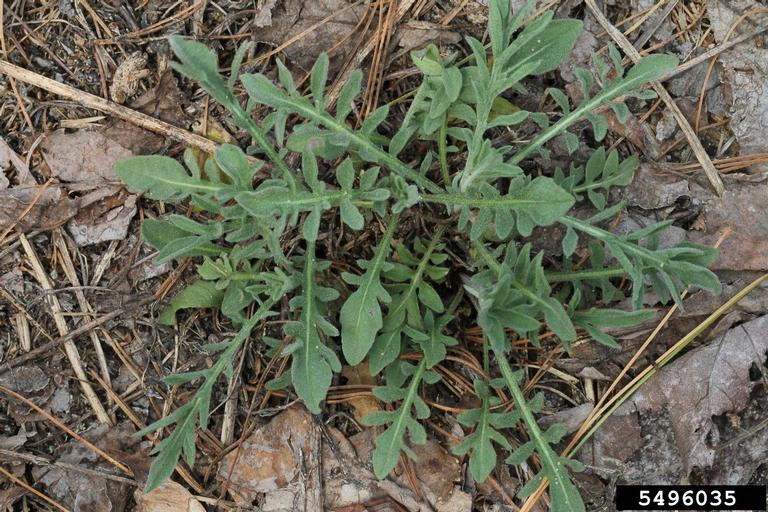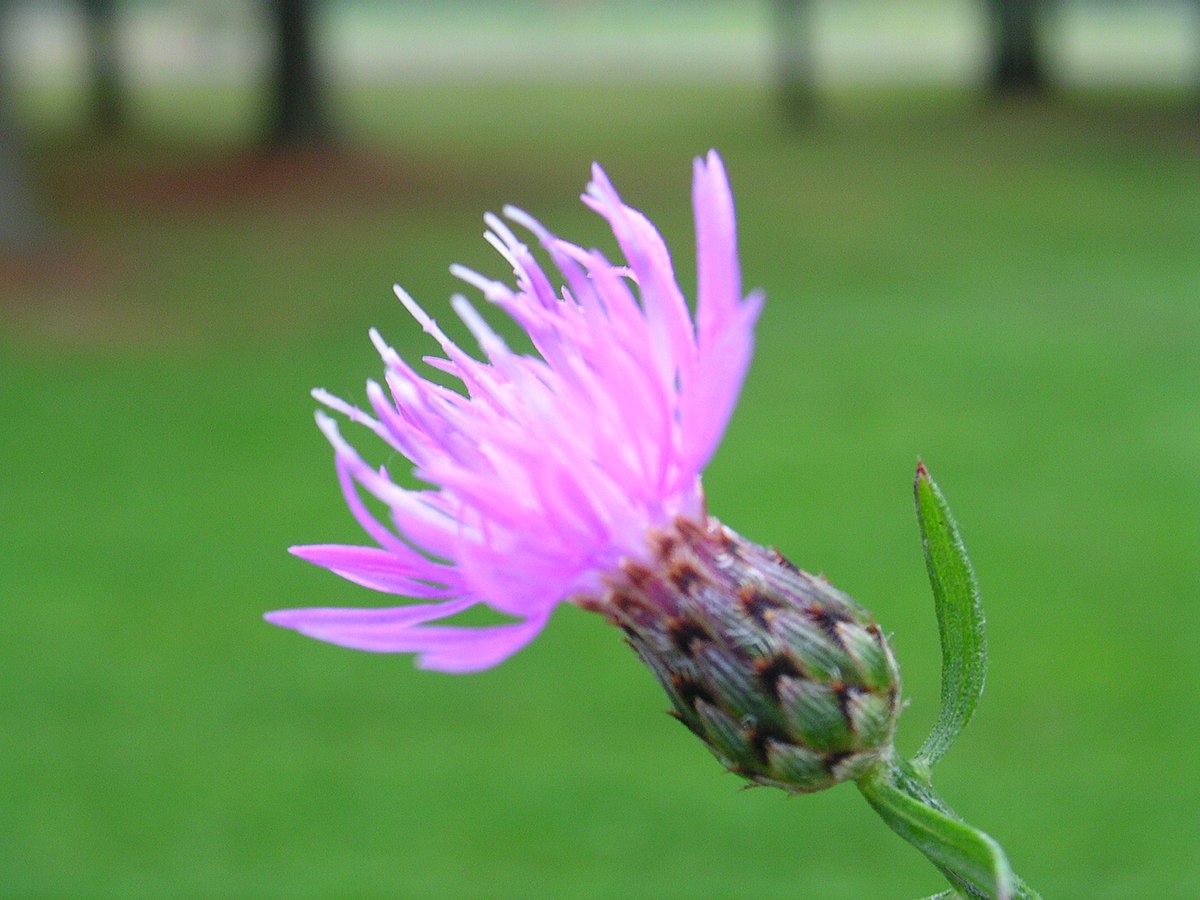Spotted Knapweed

Spotted Knapweed
(Centauria maculosa)
Priority: - Established / Strategic Control
Tags: Agricultural | Biocontrol
Identification and Reproduction
Identification
- Spotted knapweed grows from a slender stem and with maturity will divide and become heavily branched. It can reach heights up to 1.5 meters tall.
- Leaves are deeply lobed, hairy, grayish-green leaves. Form as rosettes in their first year.
- Flowers are small white, pink or purple. The flowers form from a flower head bracts that have black tips, making it appear "spotted".
Reproduction
Spotted knapweed is a biennial plant that only reproduces by seed. It is a prolific seed producer as each single plant will result in over 140,000 seeds per year.
Habitat & Ecology
Spotted knapweed thrives in exposed areas with well-drained soil. It is commonly found on dry roadsides, gravel pits, disturbed sites, and in fields
Impacts
Ecological:
- Chemical properties of spotted knapweed alters soil habitat, displacing native and agricultural vegetation.
- It reduces forage quality and availability for livestock, contaminates crops, and creates a fire hazard.
- Large infestations can increase sedimentation and runoff.
Management
Mechanical/Manual Control:
- Prior to seed production, pulling, cutting or mowing will be effective.
- If done while flowers are present be sure to properly dispose of plants, preventing dispersal of viable seeds.
- The root system should also be fully removed to reduce re-establishment.
Biological Control:
Currently 12 biocontrol agents have been used in the Mainland/Coast Region for the spotted knapweed and is being monitoried by the Ministry of Forests and Range. Bio-controls help decrease the knapweed size, growth and seed production.
Chemical Control:
- Currently picloram, dicamba, 2,4-D, clopyralid, aminopyralid and glyphosate are registered as effective herbicides on knapweed.
- It is recommended to wick or select spot spray plants.
- Please carefully read herbicide labels prior to application.
Resources
Download A Guide to Weeds in British Columbia for Spotted Knapweed here.
Header photo (Matt Lavin).




